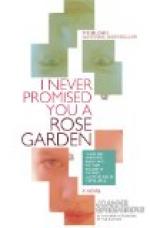But more of this later; to return to the annuals, I understand that you have had your hardy beds prepared and that you want something to brighten them, as summer tenants, until early autumn, when the permanent residents may be transplanted from the hardy seed bed.
Annuals make a text fit for a very long sermon. Verily there are many kinds, and the topic forms easily about a preachment, for they may be divided summarily into two classes, the worthy and the unworthy, though the worth or lack of it in annuals, as with most of us humans, is a matter of climate, food, and environment, rather than inherent original sin. The truth is, nature, though eternally patient and good-natured, will not be hurried beyond a certain point, and the life of a flower that is born under the light cloud shelter of English skies, fed by nourishing mist through long days that have enough sunlight to stimulate and not scorch, has a different consummation than with us, where the climate of extremes makes the perfection of flowers most uncertain, at least in the months of July and August when the immature bud of one day is the open, but often imperfect, flower of the next. As no one may change climatic conditions, the only thing to be done is to give to this class of flowers of the summer garden room for individual development, all the air they need to breathe both below ground, by frequent stirring of the soil, and above, by avoidance of over-crowding, and then select only those varieties that are really worth while.
This qualification can best be settled by pausing and asking three questions, when confronting the alluring portrait of an above-the-average specimen of annual in a catalogue, for Garden Goozle applies not only to the literature of the subject, but to the pictures as well, and a measurement of, for instance, a flower stalk of Drummond phlox, taken from a specimen pot-grown plant, raised at least partly under glass, is sure to cause disappointment when the average border plant is compared with it.
First—is the species of a colour and length of flowering season to be used in jungle-like masses for summer colour? Second—has it fragrance or decorative quality for house decoration? Thirdly, has it the backbone to stand alone or will the plant flop and flatten shapelessly at the first hard shower and so render an array of conspicuous stakes necessary? Stakes, next to unsightly insecticides and malodorous fertilizers, are the bane of gardening, but that subject is big enough for a separate chronicle.
By ability to stand alone, I do not mean is every branchlet stiff as if galvanized, like a balsam, for this is by no means pretty, but is the plant so constructed that it can languish gracefully, petunia fashion, and not fall over stark and prone like an uprooted castor bean. Hybridization, like physical culture in the human, has evidently infused grace in the plant races, for many things that in my youth seemed the embodiment of stiffness, like the gladiolus, have developed suppleness, and instead of the stiff bayonet spike of florets, this useful and indefatigable bulb, if left to itself and not bound to a stake like a martyr, now produces flower sprays that start out at right angles, curve, and almost droop, with striking, orchid-like effect.




